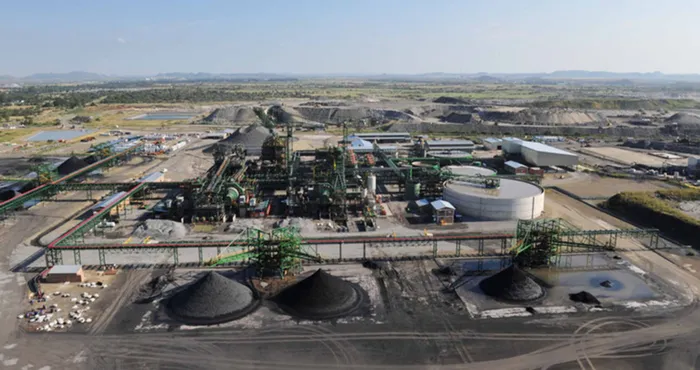Tharisa reports strong 4th performance with increased PGM and chrome production
MINING

Tharisa Mine near Rustenburg. The mining company's fourth quarter production to September 30, 2025, increased robustly and the company also announced underground mining expansion plans.
Image: Supplied
Tharisa, the mining company dual-JSE and London Stock Exchange listed mining company reported a strong fourth quarter performance after higher mining, milling, grade and recovery metrics boosted chrome and platinum production.
PGM production increased by 19.7% to 41.3 koz (thousand ounces) in its fourth quarter to September 30, 2025, compared to the third quarter, a report from the company released Tuesday showed.
Fourth quarter chrome production was up 2.9% to 407.2 kt (kilotons) over the third quarter. PGM production for the year came to 138.3 koz from 145.1 koz at the same time last year. Chrome production for the year came to 1 558.2 kt versus 1 702.6 kt a year before.
"We closed the year on a strong note, delivering robust production results in the final quarter. This performance reflects the resilience of our operations, the dedication of our teams on the ground, and the effectiveness of the investments we have made throughout the year, complemented by yet another pleasing safety performance through all our operations,” Phoevos Pouroulis, the CEO said in a statement.
The average annual PGM price increased by 18.6% to $1 615/oz compared to the average price in the 2024 financial year, with a very strong price increase of 24.1% to $1 953/oz for the fourth quarter, over the third quarter.
Average annual metallurgical grade chrome concentrate prices contracted by 11% to $266/t versus $299/t in the 2024 year, while also averaging lower in the quarter at $276/t compared to $293/t in the third quarter.
The company also announced, in the fourth quarter, its phased transition to underground mining, commencing in the west pit and achieving steady state by the 2029 financial year, with east pit portal development expected to reach steady state by the 2033 financial year.
Pouroulis said this transition would ensure long-term sustainability by unlocking the multi-generational resource endowment.
Transitional capital for the dual project development over the next ten-year period of $547 million had been committed, entrenching a “robust co-production, low-cost business model and continued investment in the mining ecosystem,” he said.
Share buybacks continued with approximately one third left under the existing $5m authority.
Cash on hand of $173m was higher than the $164.6m at the end of the third quarter, while debt stood at $104.4m versus $121.5m at the end of the third quarter. The net cash position stood at $68.6m versus $43.1m at the end of the third quarter.
Production guidance for the 2026 financial year was set at between 145 koz and 165 koz PGMs and 1.50 Mt to 1.65 Mt of chrome concentrates.
Pouroulis said their commodities continue to benefit from strong underlying fundamentals. Global demand trends, coupled with a constrained and complex supply response, had resulted in a market that was “well-supported and structurally balanced. This equilibrium underpins our positive outlook as highlighted in our continued long-term investment in our strategic assets.”
He said the PGM market and in particular platinum had been one of the strongest commodity price performers in 2025, with the continued deficits, constrained supply, and tightening stocks acting as strong tailwinds.
Palladium, however, faced a more delicate balance, while the minor metals had seen good price support driven by healthy supply-demand fundamentals, which should see continued support for current prices.
“We maintain that sustained (chrome) demand will come from the stainless steel segment, coupled with constrained supply growth providing continued support to the pricing environment."
BUSINESS REPORT